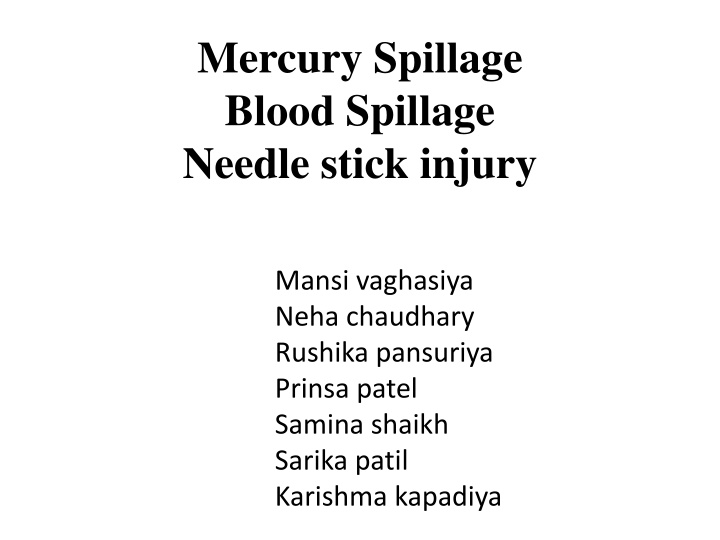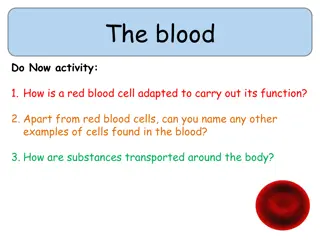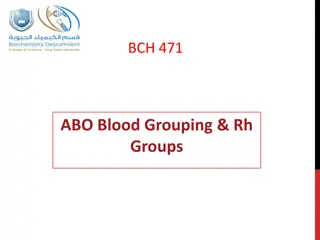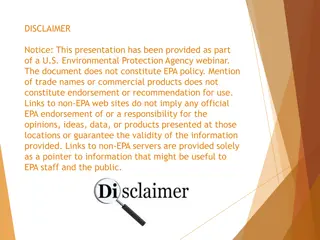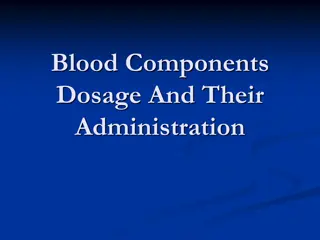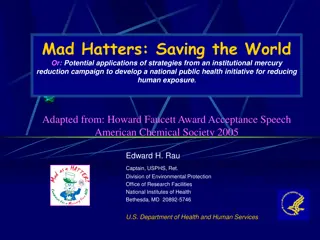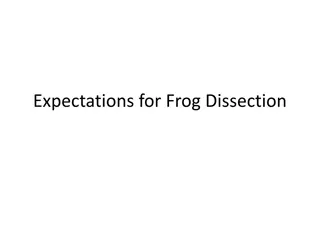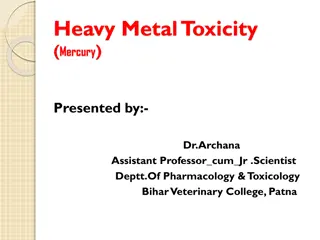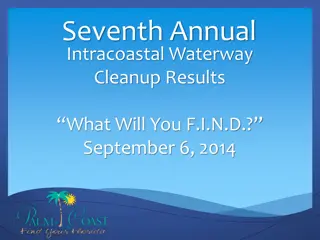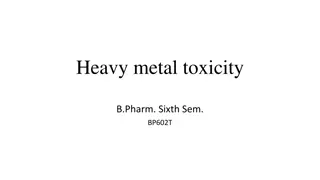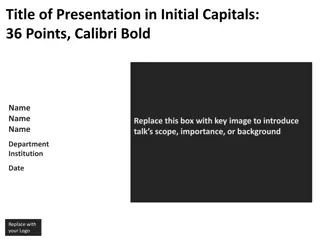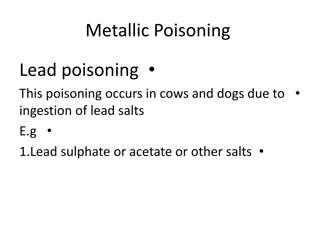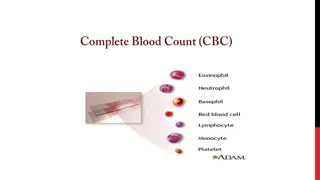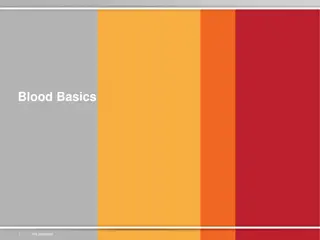Mercury and Blood Spillage Cleanup Procedures
Mercury and blood spillages can pose serious health hazards if not cleaned up properly. Mercury is toxic and can affect the nervous, digestive, and respiratory systems. Steps for cleaning include using mercury absorbent, safety gear, and proper disposal methods. Blood spillages require immediate attention to prevent the spread of infections. Proper cleanup procedures are essential to maintain a safe environment for everyone.
Download Presentation

Please find below an Image/Link to download the presentation.
The content on the website is provided AS IS for your information and personal use only. It may not be sold, licensed, or shared on other websites without obtaining consent from the author.If you encounter any issues during the download, it is possible that the publisher has removed the file from their server.
You are allowed to download the files provided on this website for personal or commercial use, subject to the condition that they are used lawfully. All files are the property of their respective owners.
The content on the website is provided AS IS for your information and personal use only. It may not be sold, licensed, or shared on other websites without obtaining consent from the author.
E N D
Presentation Transcript
Mercury Spillage Blood Spillage Needle stick injury Mansi vaghasiya Neha chaudhary Rushika pansuriya Prinsa patel Samina shaikh Sarika patil Karishma kapadiya
Mercury spillage policy Use of Mercury :- Mercury is a major component of dental amalgam Material used by dentists to fill irregular cavities in teeth. Used in thermometer, barometer, manometer, and sphygnomanometer Ethaymercury is used as a preservativative in some vaccines
Cause of mercury poisining/hazard People are mainly exposed to methaylmercury, when they eat fish and shellfish Broken fever thermometer in mouth Silver dental fillings Exposure to toxic air in industrialized communities
Hazard of Mercury:- Nervous system Irritability Memory problems Confusion delirium Muscle weakness Numbness Hearing and speech difficulties Digestive system Peptic ulcer Peptic perforation Respiratory systems Mergury fume - breathlessness Threat to the development of the child in utero
Component of mercury spillage kit:- Mercury absorbent - Absorbant powder Safety goggles latex gloves Mercury cleanup wipes Dust pan Hand boom Disposal bag
Process of cleaning mercury spillage:- Remove the broken thermometer wrap broken thermometer dispose as per BMW rule. Collect the mercury globules together with the scoope Using the syringe, pick up a mercury and place it in waste plastic bottle.
Process of cleaning mercury spillage:- Cover the spillage area with powder calcium hydroxide sulpher By using scoope, mix powder with spilt mercury. Brush the contaminated powder into the scoope and place it into waste container And cap the container tightly and can be kept safely. Dispose of waste material in the incineration waste stream.
BLOOD SPILLAGE POLICY Spillage of blood or other body fluid present a risk of disease transmission to laboratory workers. Blood spillage may occur due to laboratory sample breaks in the phlebotomy area during transport of clinical sample excessive bleeding during the procedure.
Spillage Kit leak proof yellow bag Yellow container for disposal of waste material Scraper and Pan to collect spills Rubber / Heavy duty gloves Lab coat Paper to soak spillage Safety glasses for eye protection 1% Sodium hypochlorite Non sterile gloves
Procedure to Manage Blood Spillage Cover area of spillage with CAUTION BOARD Or Mark the spillage area with marker Use tongs or a pan and brush to sweep up as of broken glass as possible. Do not pick up pieces with your hands. Absorb blood or body fluids using disposable paper towels
Take freshly prepared 1 % sodium hypochlorite. - Preparing hypochlorite solution - dilution 1:4 - For 1 litre solution, 200ml sodium hypochlorite + 800ml water Commercially 4-5 % HOCL is available Pore 1 % HOCL on spillage area and keep it for 20 minute with CAUTION BOARD
After it take the blood absorbed towel/cotton and discard in yellow container Remove gloves and discard them. Wash hands carefully with soap and water.
Needle stick injury policy:- NSI occurs when the skin is accidentally punctured by a used needle, which has been in contact with blood, tissue or other body fluids before the exposure. NSI lead to transmission of - blood borne diseases - HBV, HCV, HIV
Risk to Needle Stick Injury - Laboratory technician - Health care workers - Surgeons & Surgical staff - Bio-Medical Waste (BMW) collectors - Nursing staff
Causes of Need Stick Injury Most frequently during and after blood collection During recapping of needle During removal of needle from phlebotomy holder Carrying blood / fluid collected syringe with needle. Disposal system failures - over-filling of white plastic containers with needle - needles sticking out of containers Patients movement (children)
Management of NSI Stop the procedure immediately Wash injured area gently with running tap water & soap as soon as possible Don t apply pressure to wound Allow it to bleed freely Apply an antiseptic and a clean dressing Contact medical office / local doctor / hospital emergency department within 24 hrs for further management. Collect patient blood sample for evaluation Dispose of the needle safely.
Prevention:- Safe disposal of needle in white plastic puncher proof container Discard Plastic container as it fill up 2/3 of it s size. Use special needle with needle cover & lock system as well as easily needle detachable system for blood collection.
THANK YOU THANK YOU
